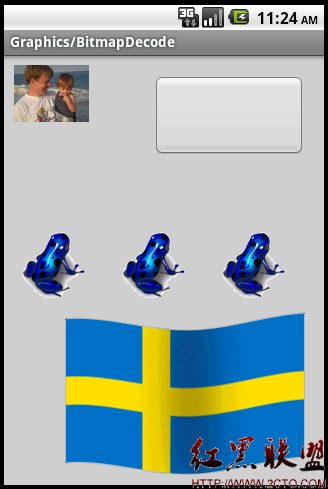android google map中使用mapView适应多个地图标识
遇到一个需求,在地图中标识多个地点(全国范围),地点的gps放到一个xml文件中,以便随时修改。要求是地图要尽可能详细,但是得把所有地点包括在内。
做法如下:
1、先得到数据的最大和最小经纬度,计算出数据的中心点(也是经纬度);
2、把地图的zoom level默认一个比较大的值,如19或20之类的。这样的话肯定是有很多地点是没有显示在mapView上的,然后再逐渐减少level的值,以显示所有的地点。
过程很清晰,看起来没什么问题,得出主要代码如下:
Java代码
public void onCreate(Bundle savedInstanceState) {
super.onCreate(savedInstanceState);
setContentView(R.layout.main);
comList = this.getComList();//获取摄像头数据
mapView = (MapView) findViewById(R.id.MapView01);
mapView.setStreetView(true);
mapView.setEnabled(true);
mapView.setClickable(true);
mapView.setBuiltInZoomControls(true); // 设置地图支持缩放
System.out.println("长和宽:"+mapView.getHeight()+","+mapView.getWidth());
mapController = (MapController)mapView.getController();
// locationManager = (LocationManager) getSystemService(Context.LOCATION_SERVICE);// 位置管理器
// 设置地图中心点
Double lat1 = (min_y + max_y) / 2 * 1E6;
Double lng1 = (min_x + max_x) / 2 * 1E6;
System.out.println("中心点:"+lat1+","+lng1);
GeoPoint geoPoint = new GeoPoint(lat1.intValue(), lng1.intValue());
mapController.setCenter(geoPoint);
mapController.setZoom(16);
...
Drawable defaultMarker = getResources().getDrawable(R.drawable.arrow);
Drawable activeMarker = getResources().getDrawable(R.drawable.icon);
defaultMarker.setBounds(0, 0, defaultMarker.getMinimumWidth(),
defaultMarker.getMinimumHeight());
PositionsOverlay posOverlay = new PositionsOverlay(defaultMarker,
comList, activeMarker,this);
List<Overlay> overlays = getMapView().getOverlays();
overlays.add(posOverlay);
//根据左上角来判断
Projection proj = mapView.getProjection();
MapController mapController = mapView.getController();
GeoPoint geoFromPix = proj.fromPixels(0, 0);//
double pix_lng = geoFromPix.getLongitudeE6() / 1E6;// 左上角屏幕像素转换成的gps经度
double pix_lat = geoFromPix.getLatitudeE6() / 1E6;// 左上角屏幕像素转换成的gps纬度
// System.out.println("缩放前中心点: "+mapView.getMapCenter());
while (min_x < pix_lng) {// 数据中最小经度如果小于屏幕所对应的最小经度(出界),则缩小地图,让数据显示到屏幕中
System.out.println("缩小地图1:" + min_x + "," + pix_lng);
mapController.setZoom(mapView.getZoomLevel() - 1);
pix_lng = mapView.getProjection().fromPixels(0, 0)
.getLongitudeE6() / 1E6;
pix_lat = mapView.getProjection().fromPixels(0, 0)
.getLatitudeE6() / 1E6;
}
while (max_y > pix_lat) {// 数据中最大纬度如果大于屏幕所对应的最小纬度(出界),则缩小地图,让数据显示到屏幕中
System.out.println("缩小地图2");
mapController.setZoom(mapView.getZoomLevel() - 1);
pix_lat = mapView.getProjection().fromPixels(0, 0)
.getLatitudeE6() / 1E6;
}
运行结果,后台狂刷:
Java代码
08-18 07:47:00.076: INFO/System.out(437): 缩小地图1:121.1004,121.145444
08-18 07:47:00.076: INFO/System.out(437): 缩小地图1:121.1004,121.145444
08-18 07:47:00.076: INFO/System.out(437): 缩小地图1:121.1004,121.145444
08-18 07:47:00.076: INFO/System.out(437): 缩小地图1:121.1004,121.145444
08-18 07:47:00.076: INFO/System.out(437): 缩小地图1:121.1004,121.145444
08-18 07:47:00.076: INFO/System.out(437): 缩小地图1:121.1004,121.145444
将左上角换成右下角,发现取不到mapView的宽和高。。。
上网找了下,说法如下:
Java代码
A common mistake made by new Android developers is to use
the width and height of a view inside its constructor. When
a view’s constructor is called, Android doesn’t know yet how
big the view will be, so the sizes are set to zero. The real sizes
are calculated during the layout stage, which occurs after
construction but before anything is drawn. You can use the
onSizeChanged( )method to be notified of the values when they
are known, or you can use the getWidth( ) and getHeight( )methods
later, such as in the onDraw( ) method
http://www.coderanch.com/t/435390/Android/Mobile/screen-size-at-run-time
要等开始布局时才能得到宽和高等特性?这么说的话使用
Java代码
pix_lng = mapView.getProjection().fromPixels(0, 0)
补充:移动开发 , Android ,




